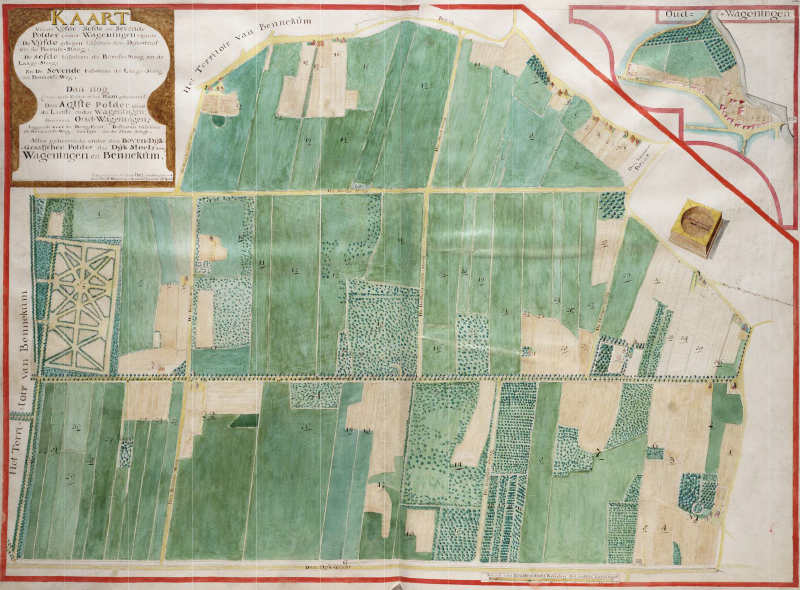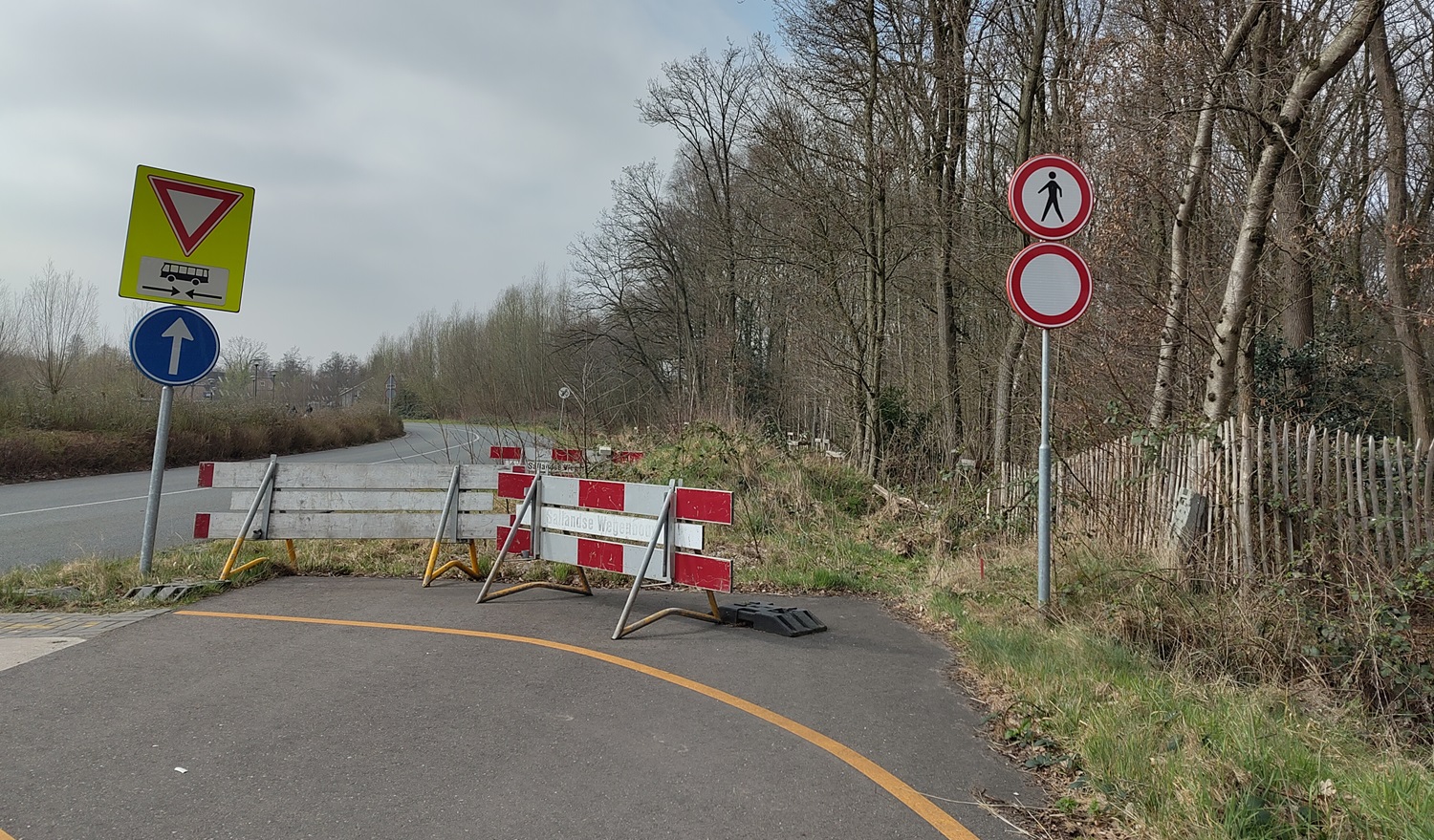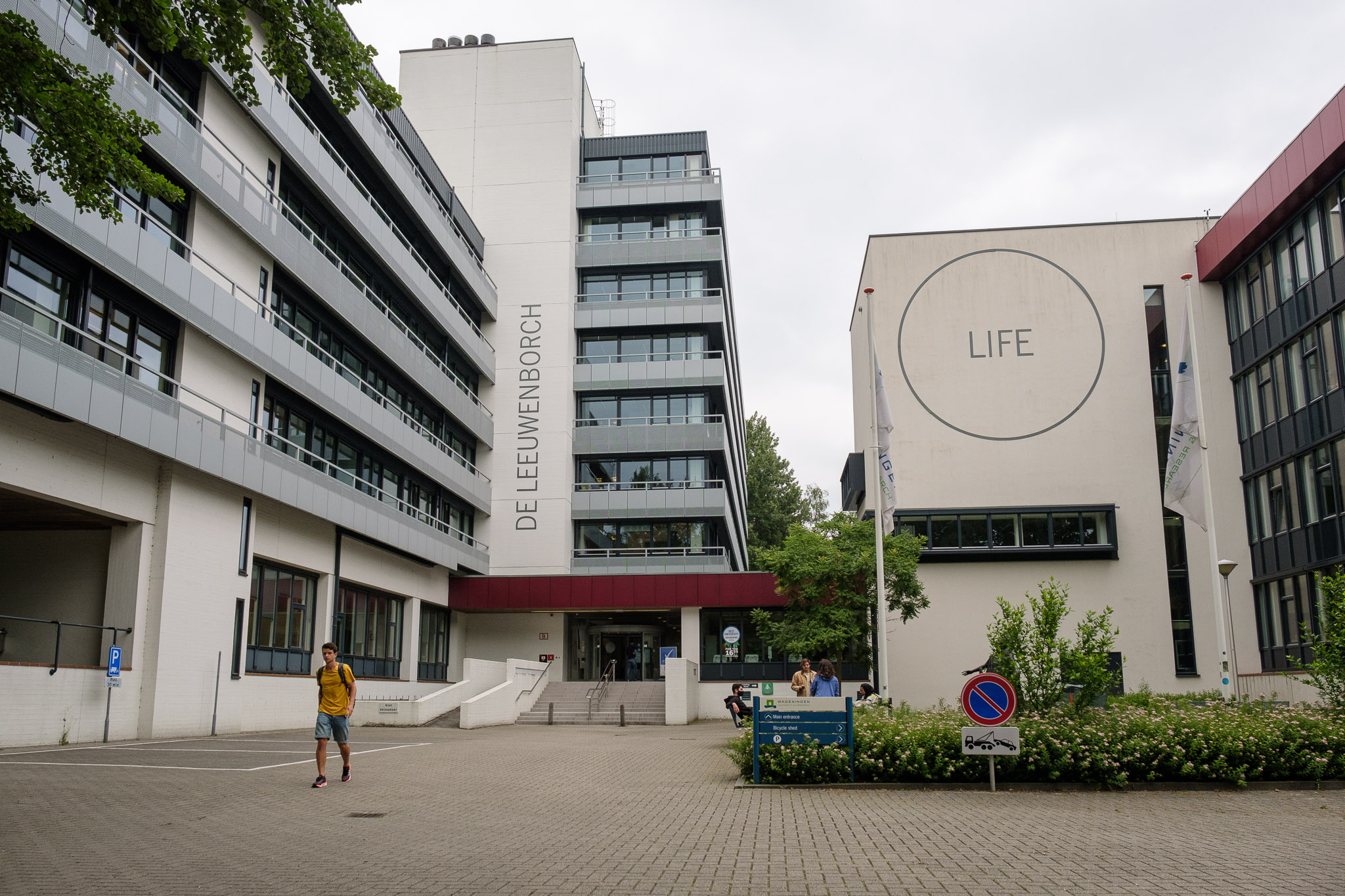Right next-door to Aurora is an ancient wood. For a while, the provincial government of Gelderland was threatening to sacrifice it to the ring road, but that plan has definitely been scrapped now. The wood has been saved. What now? Resource delves into the history and the future of the Dassenbos.
We are standing on the edge of the wood between two rows of old pollarded alder trees on an amazingly sunny October day. Patrick Jansen walks ahead of me over the last bit of unpaved road on the Binnenveld, the Buissteeg. He is associate professor of Wildlife Ecology and Conservation, and a history lover. To our right, trees grow on wide ridges interspersed with narrow ditches. This is the Dassenbos (Badger Forest), a nature area in the western corner of the campus which was very nearly sacrificed to a ring road. Jansen fought against that road as the then chair of Vereniging Mooi Wageningen (the Beautiful Wageningen Association). In October 2020, the province of Gelderland chose an alternative route, and the Dassenbos was saved. Jansen: ‘You can see the Dassenbos on a 1752 map drawn up by the Wageningen and Bennekom Dijkstoel (the predecessor of today’s water boards, ed.). It forms the last remnants of De Hooge Hoef estate, along with the hedgerow along the Bornsesteeg.’
‘Rabatten’
What is special about this wood is in its soil, says Jansen: ‘It is one of the best examples of a ‘rabatten wood’ in the area, complete with an embankment around it, which is still clearly visible.’ A rabatten wood is a drainage system of ditches and mounds on which coppiced oaks are grown. The Binnenveld used to be a lot wetter than it is now, and the land the Dassenbos is on was not suitable for agriculture. It was even too wet for coppicing, but not if you dug ditches and piled the earth from them in mounds. The oak bark provided tannin for tanning leather, and the stakes that grew out of the stumps were used for firewood. Every eight to ten years, the trees were chopped down and new shoots grew . ‘On aerial photos from 1945, the Dassenbos is bare: the wood had been harvested. Logical, because there was an acute shortage of firewood. After the war, one or two shoots per coppiced stump were allowed to continue growing into the trees we see today. So these shoots are over 70 years old, and the stumps they grew from much older than that.’
Hands-off
‘The trees here are not just of an indigenous species, but are of local stock,’ adds Jansen. ‘The seed originated in this district. There aren’t many places left in the Netherlands where that is the case.’ Which is why the Cultural Heritage Agency of the Netherlands has designated the wood as green heritage. Jansen: ‘Sadly, that heritage is not well protected. It is gradually getting damaged all over the Netherlands.’ The ring road has been scrapped but now the wood is in danger of losing trees to a cycle path (see inset, ed.), says Hans Brons, a member of the board of Mooi Wageningen. He would prefer to see the wood come under different ownership, such as the Dutch Society for Nature Conservation, Natuurmonumenten. ‘Then it will be protected for ever.’ Patrick Jansen doesn’t see the need for that, as long as WUR leaves the wood alone: ‘Hands-off management is management too. Just wait and see what happens; you don’t always have to intervene.’
Compensation and restoration
To compensate for the felling of trees for the cycle path, Lex Roders of Facilities and Services is working on a plan for replanting around the wood. Roders: ‘We want to improve the wood on the northern side, as well as plant shrubs to the south and north to discourage people from going into the woods.’
Facilities and Services always involves ecologists in plans on the campus – a singularly WUR approach, according to Roders. But the compensation plan doesn’t go down well with Patrick Jansen: ‘It’s like cutting off a strip of Rembrandt’s Night Watch and sticking a piece the same size on the other side of it. That’s not how this works. These trees and the embankment are part of cultural history. They are irreplaceable.’
Ecologist Wieger Wamelink sketches two long-term scenarios. ‘The first option is to keep things as they are now.’ Of course, you allow for rejuvenation of the wood when a tree dies, or you plant a new one. Wamelink: ‘That is appropriate to this forest, which was planted in the first place. That way it can last another couple of centuries, because those oaks can grow to be 200 years old. That is inexpensive and doesn’t take much effort.’ Wamelink would go for this option, personally. A second option is an intensive restoration of the original coppiced wood, he says. That would not be easy because the area has largely been drained. He explains: ‘You would then (a) have to restore the mounds and (b) find a way to make the wood swampy again without making the Noordwest neighbourhood any wetter.’ What is more, you would have to harvest the wood regularly. Wamelink: ‘That would change the wood a lot, making it much more open. I don’t know if that’s what anyone wants.’
Undisturbed research
‘A lot of common woodland birds brood in the wood, such as blackbirds, robins and tits, as well as green and pied woodpeckers,’ says Henk van der Jeugd, a researcher at the Centre for Avian Migration and Demography (at NIOO-KNAW). Van der Jeugd has been ringing birds in the woods on behalf of the centre since 2013. He and his colleagues collect data on birds and their role in transmitting infectious diseases such as the Usutu virus. He is pleased about the planned replanting: ‘When we first went into the woods in 2013, the northern section was a beautiful swamp with reeds and young willows, coarse vegetation varying from tall oak trees to smaller trees.’ In the same year, that coarseness gave way to grassland. ‘It would be nice to have that natural buffer zone back.’
The trees themselves are being studied too. Harm Bartholomeus, assistant professor at the Laboratory for Geo-Information Science and Remote Sensing: ‘It’s brilliant to have a place on your own campus that you can walk to in your lunch hour to take measurements or read sensors.’ Bartholomeus’ group has been measuring the structure and light in the wood for years, using lasers and cameras. With these methods, they calibrate satellite images. He hopes the trees will survive with the wood, because the greater the timespan, the more useful the measurements. He would like to see the woods being used more broadly for research, including in the education programme: ‘Last year, our students took detailed measurements of the Dassenbos. A wood like this is perfect for final year students who want to take frequent measurements.’
The Executive Board says the Dassenbos has important value as nature on the campus, and WUR therefore wants to keep its designation as nature in the zoning plans. Research will continue to be possible in the wood. But in order to preserve it, it will not be made accessible for recreational purposes: there won’t be any paths through the wood, and natural barriers such as shrubs will be put in place. The board will follow the plans described in the Green Vision of 2019 and Facilities and Services’ replanting plan (memo on Strengthening the Dassenbos, 2021)
Felling trees for a cycle path
At the beginning of this year, Facilities and Services at WUR felled 14 trees between the Dassenbos and the bus lane for a cycle path past Aurora. Lex Roders of Facilities and Services: ‘Every day, thousands of cyclists come to buildings north of the bus lane from the Mondriaanlaan. We want as few of them as possible crossing the bus lane because that is dangerous. So we want to get cyclists from the Mondriaanlaan to the northern side of the bus lane straightaway.’
‘We were not allowed to create a cycle path without planning permission because the location is designated as Greenery,’ says Roders. ‘It is not part of the Dassenbos, which is designated Nature. We reported the felling plan to the province, and they agreed to it.’ The province did say, however, that historical maps show that this was old woodland, on which trees have grown for at least 100 years without interruption. On such woodland, replanting is required on the same land. If the woodland is younger, replanting can take place elsewhere. Facilities and Services got Eelerwoude consultancy firm to sample the soil around the felled trees. The consultants concluded that it was not old woodland soil.
Patrick Jansen and the Mooi Wageningen association disagree. The trees were on the embankment, which is why Mooi Wageningen objects to the planned cycle path. Jansen: ‘That embankment is part of the rabatten structure, and there is a drainage plan behind it. WUR felled those trees without a licence, and then removed the stumps. Brons: ‘Eelerwoude’s conclusion conflicts with the cadastral maps and other studies, which were done by WUR in fact.’ A 1983 report on the Dassenbos by the then landowner DLO (now Wageningen Research) mentions the embankment and calls the Dassenbos a ‘fine example, and a unique one in this area, of old coppiced rabbaten woodland’.

 Patrick Jansen: ‘You can see the Dassenbos on a 1752 map drawn up by the
Wageningen and Bennekom Dijkstoel’
Patrick Jansen: ‘You can see the Dassenbos on a 1752 map drawn up by the
Wageningen and Bennekom Dijkstoel’ 
![[Seriously?] The Gulf of WUR](https://www.resource-online.nl/app/uploads/2025/02/WEB_DeNeus.png)
